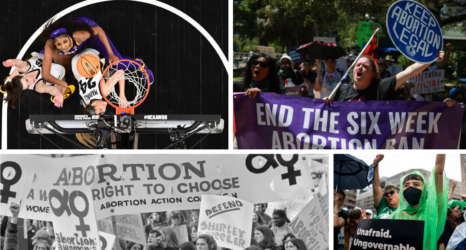Released the same week as the 40th anniversary of the Hyde Amendment, an analysis conducted by the National Partnership for Women & Families recently revealed the economic dilemma most states impose upon women by denying access to abortion insurance coverage while also neglecting to provide legislation that adequately supports expectant parents. The resulting “double bind” often denies low-income women the agency to make their own decisions and places further financial burdens upon them.
The Hyde Amendment, which was originally passed in 1976, prohibits women from using federally funded insurance plans to cover the cost of abortion care. In addition to federal employees and Native Americans, low-income individuals enrolled in Medicaid are subject to the restrictions imposed by the amendment. In fact, the Guttmacher Institute found that about 1 out of 6 women of reproductive age relies upon Medicaid. Thirty-five states and the District of Columbia currently deny federal insurance coverage for abortion care under the Hyde Amendment.
The impact of this restrictive policy is disproportionately felt by women of color. In addition to a higher likelihood of receiving insurance coverage through Medicaid and an increased risk of unintended pregnancy, women of color are more likely to be employed at low-paying jobs that would not sufficiently provide the funds necessary to cover the costs of obtaining an abortion.
However, the analysis extends beyond the Hyde Amendment’s effects by identifying states that enforce additional coverage restrictions. In twenty-five states, abortion coverage is restricted in state health insurance marketplaces. Abortion coverage is restricted in all private health insurance plans in 10 states. Twenty-one states impose abortion coverage restrictions in the insurance plans they provide to state public employees.
Under these policies, a woman’s access to abortion procedures is severely limited by her financial situation. The lack of insurance coverage has the potential to force the entire cost of abortion care onto women already facing significant financial struggles. If they don’t possess the funds to cover these medical costs, low-income women may be forced to sacrifice other necessary expenses, delay their abortion procedure or forgo obtaining the procedure entirely.
Women who are currently parents comprise the majority of individuals seeking abortion care. By instating further abortion coverage restrictions, states only compound the current absence of workplace protections for new and expectant parents. Without substantial accommodation policies and economic security, many low-income women, especially women of color, are often unable to afford to take pregnancy leave or to even take a time off to receive proper prenatal care. These women and their families may also face significant income or job losses.
The majority of states still fail to instate policies guaranteeing paid family and medical leave or paid sick days. Currently, paid maternity leave for all employees is only available at about one in five workplaces. The analysis found states like California and New York offering better access to abortion insurance coverage were more likely to provide stronger workplace accommodation policies for families.
The National Partnership for Women and Families has urged the president and Congress to pass legislative initiatives such as The EACH Woman Act, The Family and Medical Insurance Leave Act (FAMILY) Act, the Healthy Families Act and The Pregnant Workers Fairness Act in the wake of these findings.
Instead of exacerbating the economic instability and challenges low-income women already face, lawmakers should direct their efforts towards ensuring women and their families have access to the resources they need. It’s long past time to end Hyde and guarantee women have the right to make their own reproductive health decisions.





